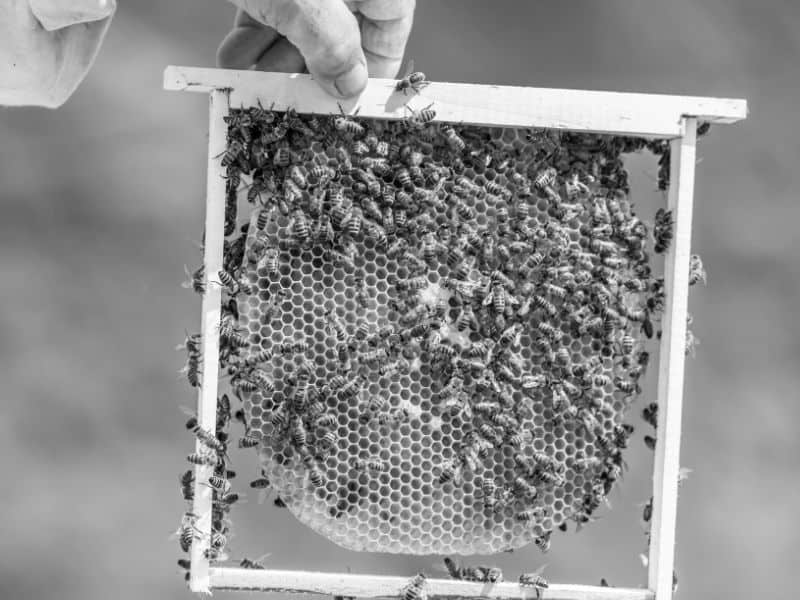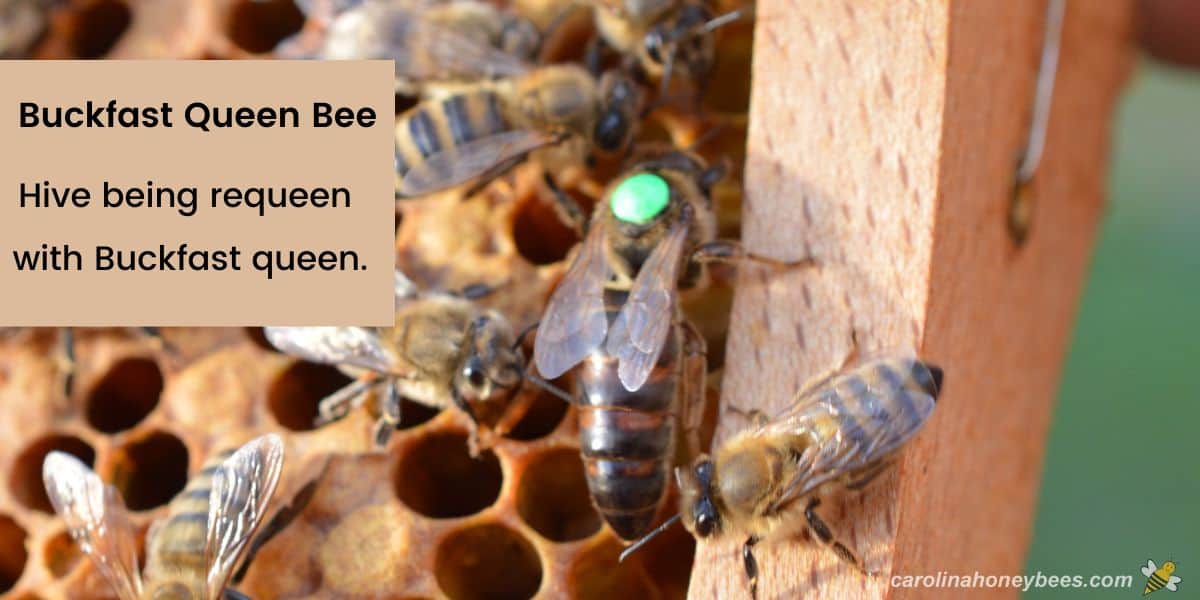Buckfast Bees
If you are involved in the beekeeping community, you have likely heard about Buckfast Bees. Though not as popular as they once were, Buckfast honey bees have a rich history in beekeeping. In years past, all of the older beekeepers in my area raised them. Today, I see more Italians and mixes in local hives but some of the Buckfast genetics are still out there.

Buckfast bees are a hybrid breed of honey bees. A hybrid is created when two different types (races) of bees are cross bred. The hope, of course, is to create a hybrid strain with the best characteristics of both.
Origins of Buckfast Honey Bees
In the early 1900’s, Brother Adam, a monk, at Buckfast Abbey in England started a new adventures. He was a passionate beekeeper and wanted to create a breeding program to develop a better honey bee.
Why was he so passionate about this bee breeding program? During this time, millions of European honey bee colonies were dying as a result of the Tracheal mite (Acarapis woodi).
He wanted to improve the bees and have healthier colonies. His goal was to develop colonies that were good honey producers, adaptable to different conditions and showed some resistance to disease and pests.
Breeding Better Bees: Brother Adam’s Vision
Brother Adam used various strains of honey bees from around the world in his quest for the best.
He did not spend all of his time in the Abbey apiary. Instead, he traveled the world (Middle East, Europe, Africa, etc.) in search of the hardiest bee genetics for his research.
Italians and German Black Bees
One of the most notable contributions to bee breeding was his work with Italian bees and the dark German Bees.
The dark bees (sometimes called Black Bees) were hardy but had a reputation for being very aggressive and difficult to work with.
Italian honey bees were praised for being very productive and having a calmer attitude. Brother Adam carefully selected the best Italian queens for his breeding program.
His work in combining the genetics of these two resulted in the hybrid known as the Buckfast bee. They were a definite improvement on some of the bees in use at the time.

Characteristics
Each breed or race of honey bees have certain characteristics that beekeepers can expect. But, these are just guidelines as even hives of the same type can behave very differently.
There are several desirable traits of Buckfast bees:
- Appearance
- Productivity
- Easy to manage
- Disease Resistance
Appearance
Buckfast bees have a notable appearance. Darker in coloration on the head and thorax, they have distinctive light-colored bands on the abdomen. (Who doesn’t want a pretty bee? ;))
Productivity
They are known to be very productive. Buckfast bees worker have to build comb, tend brood and produce honey.
They seem to overwinter well, are slower to build up in the Spring and show a low inclination to bee swarming. This means less work by the beekeeper to manage the colonies.
Easy to Manage
The earliest strains of Buckfast bees were said to be gentle and easy to work with. (More on this later). This is important to beekeepers as many are hobbyists and desire colonies that are not overly aggressive.
They are also not known to be excessive producers of gummy bee propolis. This is an important product in the hive but too much can make hive inspections difficult.
Disease Resistance
But, the most important advantage to this hybrid was their hardy nature and resistance to disease and pests. Buckfast bees also show vitality in many different climates.
Of course, being a hybrid – they enjoyed a wider genetic pool and this diversity helped them adjust to changes and environmental pressures.

Challenges to Raising Buckfast Bees
A major challenge to the beekeeper who wants to raise Buckfast bees is acquiring pure stock. Even though they are a hybrid strain, genetic purity helps maintain the desirable characteristics that Brother Adam was working for.
Only a few suppliers in the United States produce the Buckfast hybrid. This makes cost and availability a factor when buying bees for your hives.
Also, both suppliers are located in areas where Africanized bees are known to be established. Of course, every breeder goes to great lengths to produce the best bees possible.
But, with African genetics in the area – there will also be a risk of unauthorized mating. This is unpreventable due to the way honey bees reproduce.
Which brings to question the gentleness factor. Every beekeeper that I know who has kept Buckfast bees – had some pretty sassy colonies.
Any hive of bees may be more aggressive in certain occasions, but these hives were too aggressive for me.

Benefits
Despite some of the challenges, Buckfast bees offer numerous benefits. Researchers continue to work with them in hopes of finding a honey bee totally resistant to mites.
Even today, Buckfast bees are recognized as a favorable hybrid breed. They continue to be popular among beekeepers worldwide. The legacy of Brother Adam’s work continues to live on through these remarkable bees.
This might be the best honey bee for your apiary. But, do the research before investing to make sure you are up to the task.
Also, they are often compared to the Carniolan honey bee – another popular choice for backyard beekeepers.
FAQs
A hybrid strain of honey bees, developed by Brother Adam of Buckfast Abbey in Devon, England.
Buckfast bees were sought after due to their productivity, adaptability and resistance to some disease and pests.
The Buckfast hybrid is as easy to raise as any other type of honey bee. They still require regular hive inspections and monitoring for disease and pests.
Available from suppliers worldwide, be sure to purchase Buckfast bees from a reputable breeder to ensure genetic purity.
Yes, the females can sting just the same as any other type of honey bee.
Final Thoughts
Honey bee genetics is beyond the scope of this simple beekeeper. However, the race to breed a better bee continues. Healthier, hardier and more productive is the goal. Brother Adam was an early pioneer in this endeavor with his Buckfast bees but the work continues.

